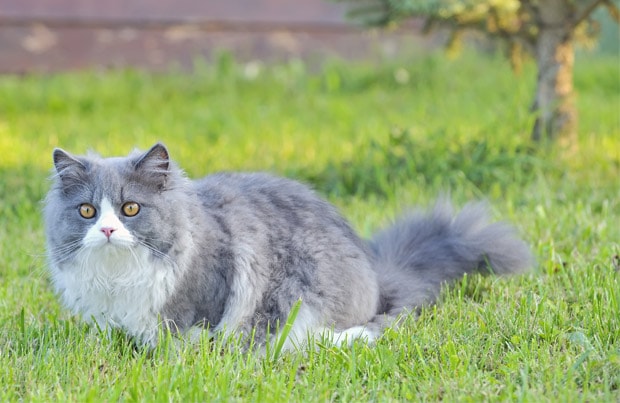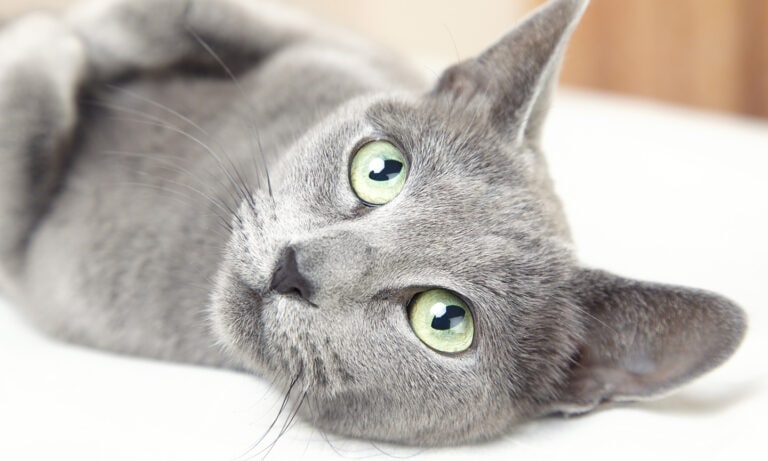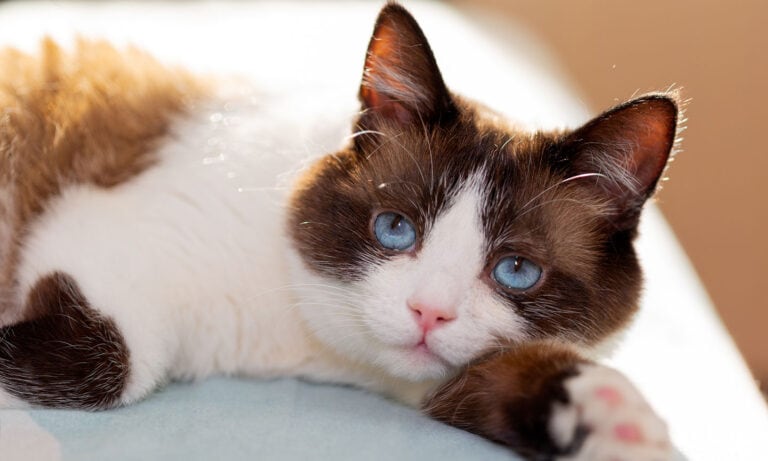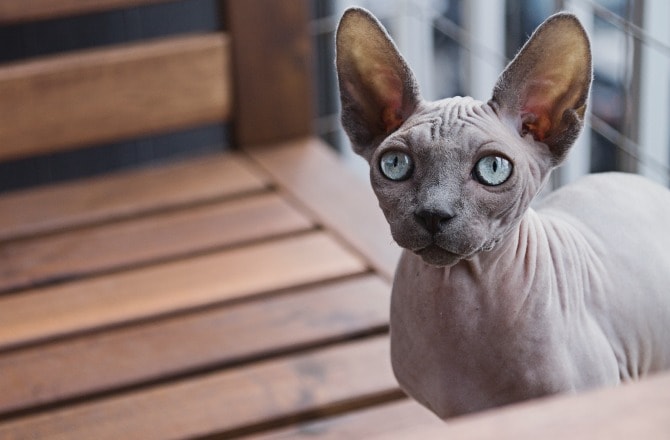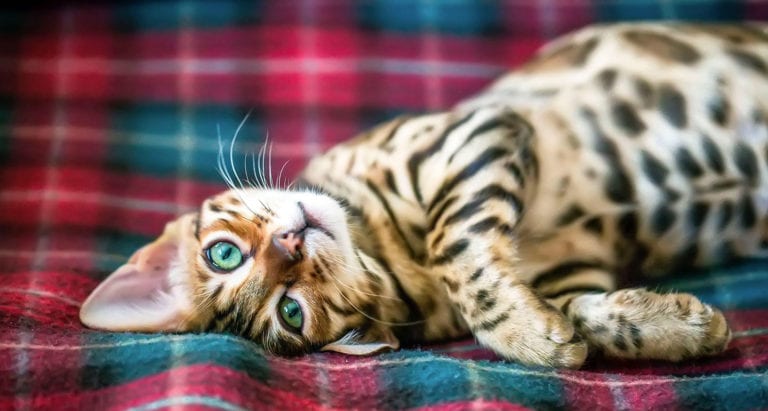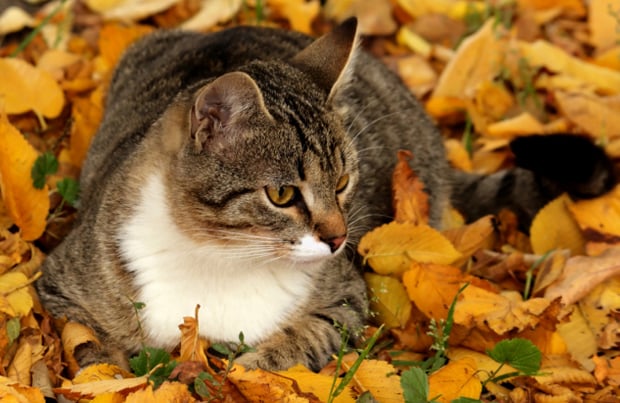About the Ragdoll Cat Breed
The Ragdoll is named after its personality trait. When being picked up, it goes limp in your arms. The breed is a lovable cat that is great with children and makes the perfect addition to any family.
Ragdoll Physical Characteristics
Large and heavy, the Ragdoll embodies the essence of quiet power. This semi-long haired domestic breed loves people, and can weigh anywhere from 10 to 20 pounds. Read more about other big cat breeds.
Color(s)
The breed comes in the four traditional pointed colors: seal, chocolate, blue and lilac; and three divisions: solid or colorpoint, particolor mitted, and particolor bicolor. A mitted Ragdoll has white-gloved paws, while a bicolor Ragdoll has its face covered by a white mask in the shape of an inverted “V.” The bicolor also has its legs, chest, stomach and ruff – a collar of fur around the neck – all covered in white.
Coat
Semi-long and silky.
Ragdoll Personality and Temperament
Activity Level
Low to moderate
Positives
This cat has one of the best manners (and softest voices) in the cat kingdom. It is polite, docile and sweet-tempered, and not the type to pester you for attention. Most importantly, it is an affectionate cat that will get along well with children or other pets, making it an excellent companion for the whole family. Ragdolls are also relaxed and quiet, and can be very tolerant of being carried around. Read about other easy-going cat breeds.
Things to Consider
The breed can be playful, but is not always active. Easily trainable, this cat will lie limp like a rag doll, hence its name.
Ragdoll Care
Ideal Living Conditions
Almost dog-like in their behavior, the breed has been known to enjoy a game of fetch, greet their owners at the door, sleep with their owners and generally choose to be where you are.
Special Requirements
Although the breed’s coat requires minimal grooming, they should be combed with a steel comb, like the Andis steel pet com, on a regular basis to find and remove any loose hair or tangles.
Ragdoll Health
The breed is not known to have any health conditions or issues more so than any other breed of cat.
Ragdoll History and Background
The history of the Ragdoll is marred with controversy and outlandish stories. One such story claims a female cat was made part of a secret government experiment and genetically changed. Afterwards, the cat was allegedly able to produce these wonderful looking creatures with Ragdoll characteristics. Outlandish stories aside, the breed is commonly attributed to Ann Baker, a Persian cat breeder in California, and her cat Josephine, a semi-feral longhaired white female of Persian/Angora origin.
The Ragdolls of America Group (RAG) – a group formed to gain acceptance for the breed in the Cat Fanciers’ Association (CFA) – claims that Josephine lived on the property of a Mrs. Pennels in Riverside, California. According to RAG, Baker accidentally ran over Josephine with her car in the early 1960s. After the cat recovered, it was crossed with a feral black and white-mitted, long-haired tom. The union produced a solid black male kitten, named Daddy Warbucks, and a seal pointed bicolor female, named Fugianna. Tiki, a seal point female, and Buckwheat, a black and white mitted male, were both born in the next liter.
Of all the tales concerning the breed’s origin, this seems to be the most plausible.
In 1971, Ann Baker created her own registry for the breed, the International Ragdoll Cat Association (IRCA), and trademarked the Ragdoll name to protect her interests. The trademark was valid until 2005, which forced IRCA breeder to pay licensing fees and a 10 percent royalty fee for each kitten they sold. Also, prior approval from Baker was required if breeders wanted to register or showcase there IRCA Ragdolls with certain cat associations.
Displeased with this arrangement, many breeders split from Baker and the IRCA and formed the Ragdoll Society in 1975. Its name was later changed to the Ragdoll Fanciers’ Club International (RFCI). Founded by Denny and Laura Dayton, the first breeders to buy Ragdolls from Baker, the RFCI was dedicated to achieving recognition from mainstream cat associations and developing the breed. This created much hostility between the Daytons and Baker, and years of litigation followed.
Later, other breed groups formed to promote the breed, such as the RAG in 1993. It took many years to overcome the controversial past, but the RFCI and other non-IRCA breeders advanced the Ragdoll to championship status in every major North American cat association – even the CFA, which granted championship in 2000.
The Ragdoll has become quite popular, but there is still confusion as to the history of the breed. Nevertheless, Ragdoll fanciers are moving past that and hope for a brighter future for this wonderful cat.
By: Chewy Editorial
Share:
